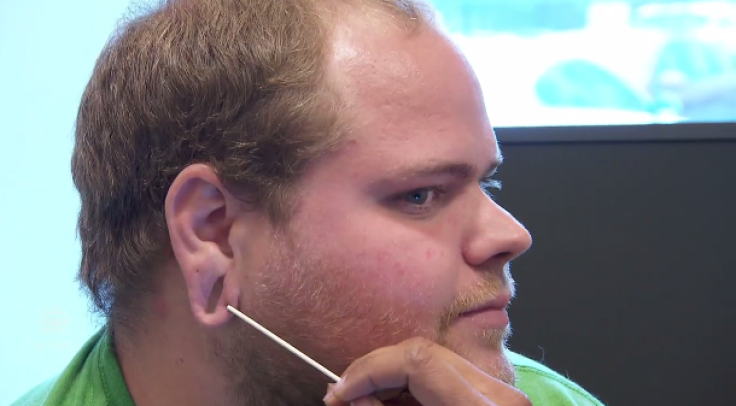Canadian Man Gets Cosmetic Surgery To Repair 2-Inch Gauged Ears

Whether it’s a tattoo, a nipple ring, or gauged ears, you probably thought it was a good idea in your teen years. That is, until you’re clouded with inevitable regret in adulthood. Kurt Barnett, 25, of Ontario, Canada, didn’t realize the repercussions of ear gauging until his earlobes stretched to 1.7 inches across and got in the way of his job. Forty-five minutes and two leftover pieces of lobe later, Barnett’s mood shifted from regret to satisfaction after looking in the mirror following his earlobe reconstruction surgery.
"I'm really shocked that I have normal looking lobes," he told the CBC in a video. "I like it."
Dr. Julie Khanna, a plastic surgeon at the Institute of Cosmetic and Laser Surgery in Oakville, Ont., who also performed the procedure, admits earlobe reconstruction surgery is growing in popularity among those stricken with earlobe-stretching regret. In several cases, surgery is the only solution to fix a stretched ear, especially if the holes are as big as Barnett’s. Typically, the surgeon uses internal and external stitches in the earlobe and reshapes the lobe to a more normal shape — often done by slicing off excess stretched skin.
Surgeons numb the ear for approximately 40-plus minutes while the patient is awake. However, cosmetic techniques can vary, with patients ending up with a scar along the contour of the reconstructed earlobe. Barnett’s ears are expected to completely heal in about three months, while his faint scar will still be visible.
Barnett, whose work currently entails spray-foam installation, can now wear his respiratory mask properly over his head when wearing jewelry. Previously, his earlobes would sag due to the huge holes left from the spacers. Now, he aspires to make a documentary about his journey to help today’s teens fully consider the potential consequences of earlobe stretching.
“The problem is, nowadays it's so common for people to stretch their ears, and I'm just not sure if people are aware of the repercussions," he said.



























